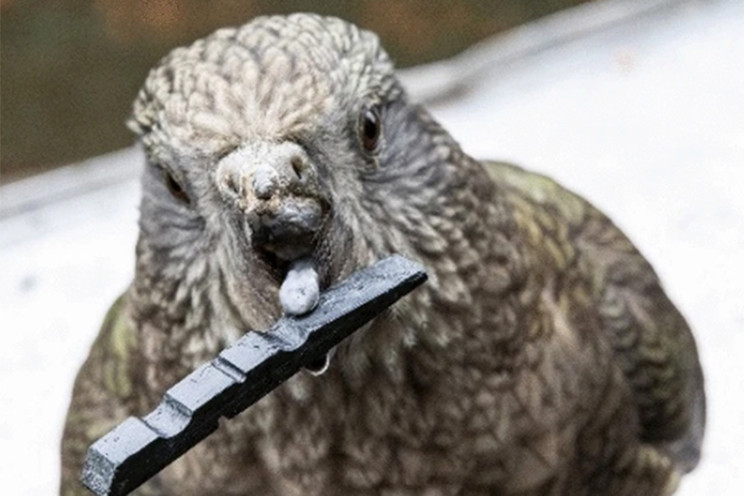Bruce, a wounded parrot who has created and is using his own prosthetic beak, may be one of the most brilliant nonhuman tool designers of all time. Bruce is a disabled parrot who has designed and is using his own prosthetic beak.
Bruce is a kea, which is a parrot that can only be found in New Zealand. The youngster is about 9 years old, and when wildlife experts discovered him as a newborn, he was missing part of his top beak, which was most likely lost when it was trapped in a trap used to catch rats and other invading animals that the nation was attempting to eradicate. In order to rid themselves of parasites and to remove dirt and filth, kea use their strikingly long and curved upper beaks, which are extraordinarily long and curved, to preen their feathers.
Bruce scrapes about until he finds the ideal-sized stone to remove mites and filth that have taken up residence in his green and red plumage, much as a person would search the store shelves for the perfect hairbrush. Kea have been seen utilising tools such as sticks to disengage pest-traps in the past, but Bruce’s behaviour is noteworthy since it is the first documented instance of a Kea employing a tool for the purpose of self-care.
Bruce’s research, which was conducted in the Willowbank Wildlife Reserve in Christchurch and published in the journal Scientific Reports, has gained widespread attention. Although there have been anecdotal accounts of pet parrots using self-care tools, according to the University of Auckland researchers, this kind of tool usage is very uncommon in the wild.
With the top part of his beak missing, Bruce was discovered in Arthur’s Pass in 2013. He was still a juvenile when he was discovered. He is believed to have been injured as a consequence of an accident involving a pest trap, according to the researchers, who do not know how he was injured. He was taken to the South Island Wildlife Hospital, where he was nursed back to health before being placed in his present residence.

